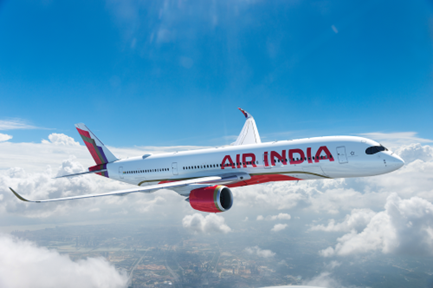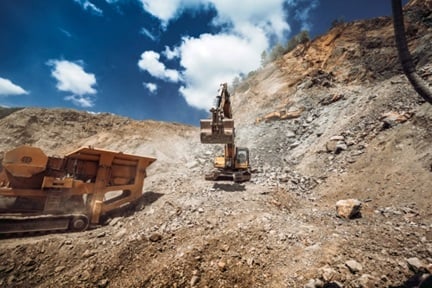Trade opportunities with the Democratic Republic of Congo (DRC)
Despite political instability, weak governance, and poor infrastructure, trade with the DRC is growing.
By Johan Burger

The Democratic Republic of Congo (DRC) is a country with a population of 89.39m. It is generally viewed as country with significant political instability, with high levels of corruption. However, it has a lot of potential and is one of the richest countries in `Africa in terms of mineral reserves. Its 2020 GDP stood at US$49.87bn, with a per capita GDP of US$414 and a GDP per capita (PPP) of US$1072. It has a positive trade balance of US$400m, with exports at US$15.031bn and imports at US$14.632bn. Its Ease of Doing Business rank is at a low 183, which is close to the lowest globally.
Despite this, there is a lot of potential for exports to the country, more so should the country get its act together and tap into its mineral and other forms of wealth. The country boasts immense mineral reserves ranging from beryl, cadmium, cassiterite, coal, copper, gem-quality diamonds, gold, iron ore, manganese, monazite, uranium, and zinc, while the DRC is the world’s largest producer of cobalt. Cobalt is an essential component in the manufacturing of electric vehicle (EV) batteries, creating more wealth potential for the country.
As it is, the DRC has vast hydro-electricity potential and can provide the whole of South Africa with electricity. More specifically, the Congo River in the DRC is the second-longest river in Africa, with a potential to produce up to 100,000 MW, close to a third of Africa’s total hydroelectric potential.
Retail shops in Kinshasa create the impression that its population has a strong taste for exotic products. It appears as if everything is imported. These range from common products such as water, clothes, and food, to luxurious furniture.
During a recent Outward Seller Mission held by ZimTrade in May 2021, and followed by another one in mid- September, a range of export opportunities were identified. Although these were identified by Zimbabwean trade delegates, they remain valid for all interested in trading with the DRC. Given a population of 89.39m, the DRC is an attractive market to target.
Firstly, the DRC has a significant potential for processed foods. These include bottled mineral water, sweets, yogurt, biscuits, cheese, tinned foods, and most processed foods that are imported from Europe, the Americas and Asia. Some products with potential include peanut butter, honey, sugar, cooking oil, bathing soap, sweets, and washing soap.
Secondly, horticultural products in Kinshasa’s retail markets, such as blueberries, are imported from as far as the Americas, Asia, and Europe. Fresh produce and fruits, in general have the potential to do well in Kinshasa.
Thirdly, as the DRC is modernising its agriculture sector, there is the opportunity to supply the country with appropriate technologies and products. Typical products include cultivators, hand-held farming equipment, planters, and tractors. There is also a growing opportunity especially in poultry farming in addition to animal husbandry in general. Typical agriculture products include cereals, cotton, fresh fruits, meat, nuts, sugar, vegetables, and vegetable fats and oils. There are also opportunities for agriculture inputs and supplements for both smallholder farmers and established commercial farmers.
Fourthly, in the building and construction sector, products with potential include bathroom boutique products, bricks, door frames, electrical products, fasteners, floor tiles, gum poles, PVC pipes, roofing tiles, timber, and window frames. There is also a need for engineering services.
Fifthly, in the mining sector, the DRC has significant ore reserves in many minerals. There is a strong potential for capital plant equipment such as classifiers, concentrators, draglines, drills, earth moving equipment, flotation cells, gearless drives, grinder mills, material handling feeders, mine ventilation equipment, mining support vehicles, power generation machinery, primary and secondary crushers, separators, and tyres.
In addition, the sector requires electrical equipment and consumables such as batteries cables, electric motors, transformers, ventilation fans, and general electrical consumables. Other consumables include aluminium powder, ammonia, anodes and cathodes, caustic soda, coal, and cobalt sulphate.
This sounds like a shopping list but is indicative of the potential for exports to the DRC. The table below provides the Top 10 countries exporting to the DRC in 2020. They provide 74.9% of the imports to the DRC. Interestingly, only three countries provide 55.1% of imports to the DRC, i.e., China, the USA, and South Africa.
Sources of Imports to DRC: Top 10 Countries
As far as the main categories of products imported are concerned, the table below provides the Top 11 categories.
Products imported by the DRC: Top 11 Categories

There are several countries that have assessed the potential of exporting to the DRC and are doing well.
Additional readings:
Majuru, A. 2021. Endless export opportunities in the DRC. The Sunday Mail. 19 September 2021. Available at https://www.sundaymail.co.zw/endless-export-opportunities-in-the-drc. Accessed 24 October 2021.
Trading Economics. nd. Congo Imports by Category. Trading Economics. nd. Available at https://tradingeconomics.com/congo/imports-by-category. Accessed 24 October 2021.
Trading Economics. nd. Congo Imports by Country. Trading Economics. nd. Available at https://tradingeconomics.com/congo/imports-by-country. Accessed 24 October 2021.
Qekeleshe, S. 2020. The DRC: A Resource-Rich Country. Energy Capital & Power. 9 November 2020. Available at https://energycapitalpower.com/a-resource-rich-country/. Accessed 24 October 2021.














/enri-thumbnails/careeropportunities1f0caf1c-a12d-479c-be7c-3c04e085c617.tmb-mega-menu.jpg?Culture=en&sfvrsn=d7261e3b_1)

/cradle-thumbnails/research-capabilities1516d0ba63aa44f0b4ee77a8c05263b2.tmb-mega-menu.jpg?Culture=en&sfvrsn=1bc94f8_1)







